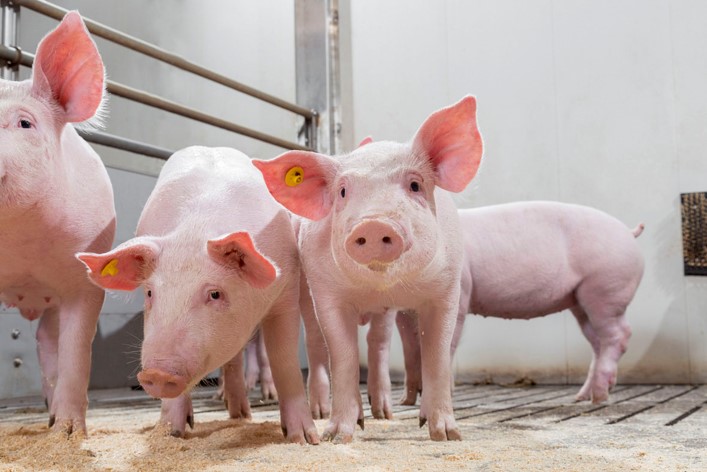



Critical factors impacting pre-weaning piglet health
As sows have become much more prolific in the last few decades, this has resulted in a significant increase in the total number of piglets born and the total number of pigs weaned.Part of Series:
< Previous Article in Series Next Article in Series >
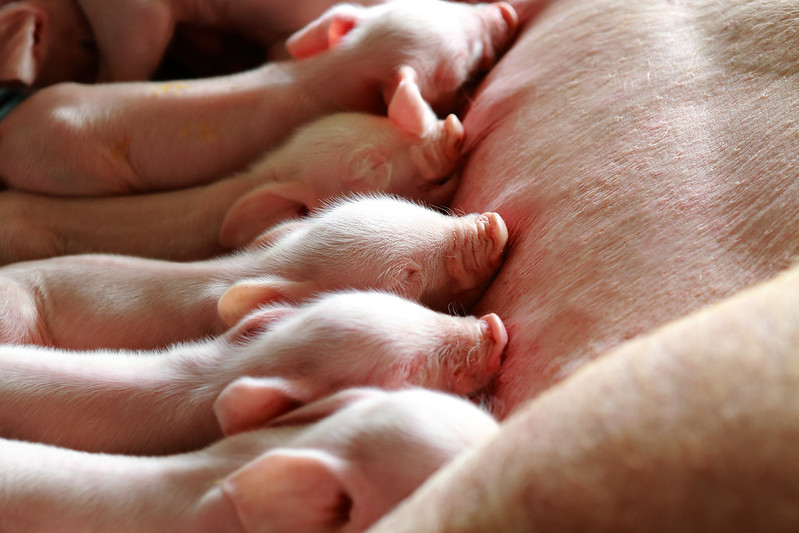
Crucial pre-weaning factors can influence the early growth and health of the piglets. As sows have become much more prolific in the last few decades, this has resulted in a significant increase in the total number of piglets born and the total number of pigs weaned. However, stillborn deaths and pre-weaning mortality have also increased.
“In the past, we lost about two piglets per litter, now we lose three piglets on some farms, and even more due to stillborn or mortality between birth and weaning,” said Dominiek Maes, professor of Veterinary Medicine at Ghent University, in Belgium. “It's important to try to minimize these losses, also due to the investment in the piglets, so our goal is to have as many piglets alive and weaning as possible.”
The peripartal period of the sow is a critical period with many changes occurring including housing, nutrition, management, metabolism and hormones levels. Farms also face sow problems with insufficient feed intake, farrowing that is too slow or occurs too early and insufficient milk production.
“Quite a lot of problems may occur that might seem independent but are very often linked to each other,” he explained. “It's important to approach these piglet and sow issues with more of a multi-dimensional approach, so that you do not only look at one aspect – but at all of them from different perspectives.”
Solutions for decreased milk yield and/or excess of piglets
Several management practices are available to handle large litters and help newborn piglets not only survive but thrive.
Split-suckling - many farms practice split-suckling during the colostrum phase and/or during the milk phase. The overall strategy is to separate the heaviest piglets for a couple of hours so the smaller piglets have time to suckle more milk and can grow sufficiently and keep up with the weight gain of the larger pigs. During the colostrum phase, the first six born piglets should be identified and separated under a heat lamp for just a few hours. This allows the piglets who were born later to access and suckle sufficient colostrum. During the milk phase, the same strategy is used but its goal is to obtain more homogeneous litters.
Cross-fostering – use of this approach is recommended after colostrum intake has occurred and depends on the number of functional teats in relation to the litter size. It's flexible to the situation – move the heaviest pigs to another sow or the smallest pigs depending on the foster sow or on-farm procedure. However, try to limit the number of pigs fosters with different sows primarily for biosecurity reasons. Keep notes identifying how many pigs have been transferred from one sow to another.
Start creep feeding in farrowing unit – begin providing creep feed early in life regardless of litter or farm size but it is especially important for highly prolific sows with large litters. While the amount of creep feed ingested will be quite low, studies have shown that it plays an important role in the development and maturation of the gut microbiome.
“It's essential to adapt suckling piglets to the feed that they will receive after weaning,” said Maes. “Many studies have been conducted on feed composition, and there has been some interesting research that we have performed with Trouw Nutrition on the role of fibers in the piglet diet that indicates they may alter the large intestinal morphology and influence the fermentation and the microbial population, especially in the hind gut.”
Optimal housing for early life
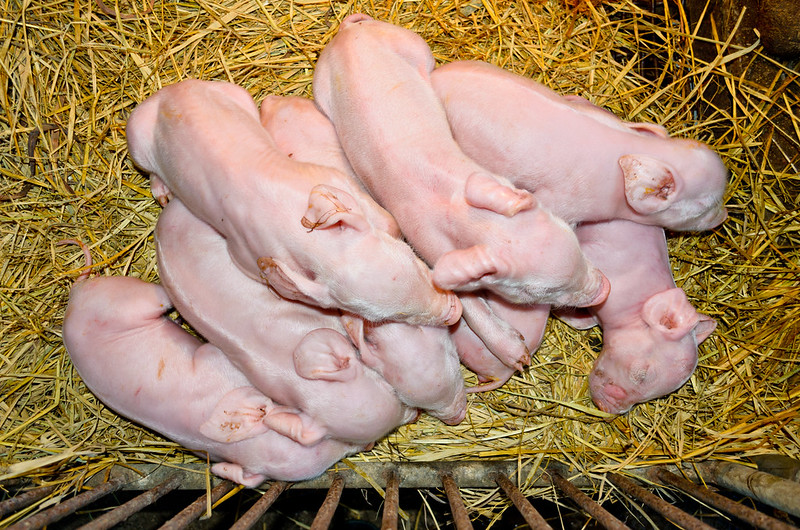
It's imperative to provide optimal housing conditions and ambient climate for newborn piglets. In the image above, the left-hand picture shows a group of piglets that lay huddled together because they are too cold. On the right-hand picture, they lie apart from each other because it's too warm.
“If you enter a farrowing house, it's very important to look carefully at the behavior of the animals and also the housing conditions because we can learn a lot by observing,” he explained. “We sometimes have the reflex to think immediately in terms of diseases and differential diagnosis, but the first thing we should do is look carefully with our eyes.”
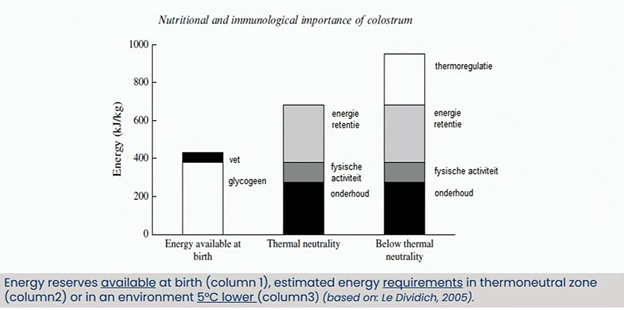
The chart above shows the energy that is available in the piglets at birth (left column) The middle column shows the energy needed for maintenance and for performance at thermo neutral conditions (optimal conditions). The right column shows what the energy requirements are for piglets that are housed below thermo neutrality, so it's too cold in the farrowing house.
“You can see that cold piglets needs a lot of extra energy just for thermal regulation, and this energy must be spent to compensate for an insufficient climate, whereas it could be used for growth, health and performance,” he noted. “Thus, it's imperative to provide an optimal climate in the farrow housing.”
Most farrowing houses are built in a classical way with a crate for the sows and the piglets that are housed with the sow.
“This system has been used for decades, but in the last five to 10 years more research has been done on loose housing systems for lactating sows. In the future that might become even more important due to societal pressure that loose housing gives the sow more opportunities to express a natural maternal behavior like nest building,” Maes said.
The following table shows general considerations for loose house systems for lactating sows:
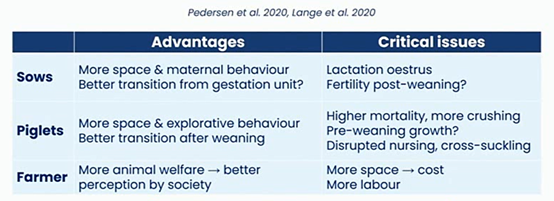
Infectious disease challenges
In the farrowing barn, diarrhea is the key challenge in suckling pigs. Neonatal watery diarrhea is usually associated with high mortality. Mild diarrhea in pigs one to three weeks old is also often seen throughout the farrowing house that is not associated high mortality. If a diarrhea problem exists, there is immediately much more work for the farmer – higher treatment costs, hygiene problems, etc.
Apart from diarrhea, other disease conditions may occur in pigs such as arthritis, paleness, sneezing and nasal discharge and skin diseases. These conditions may also lead to mortality, uneven growth and a lower weaning weight, so be sure to implement proper monitoring and control measures for these diseases.
To watch Dominiek Maes’ presentation or other seminar speakers on-demand, click one of the following links:










